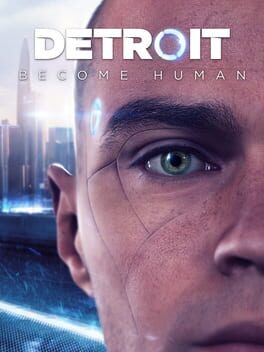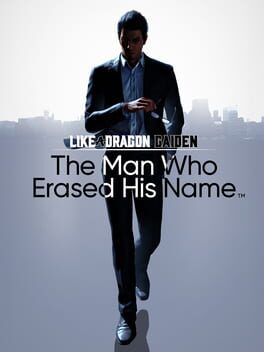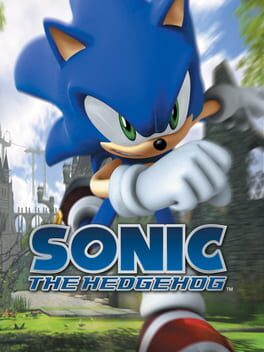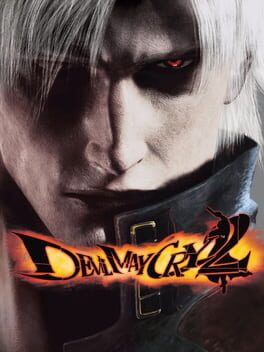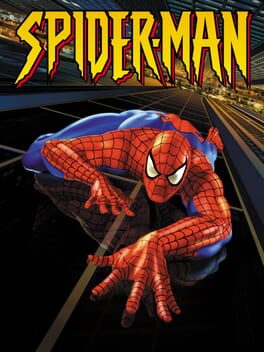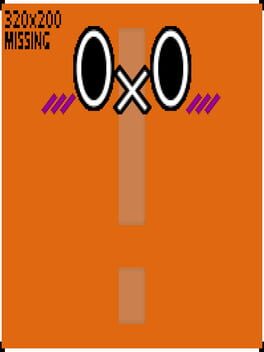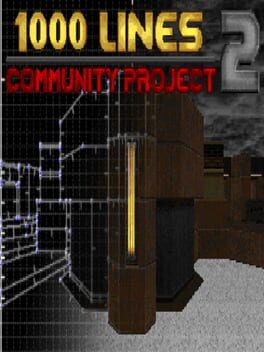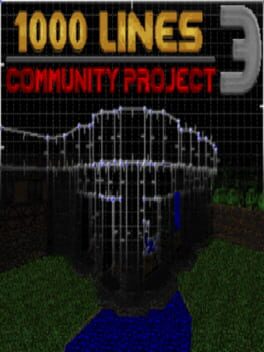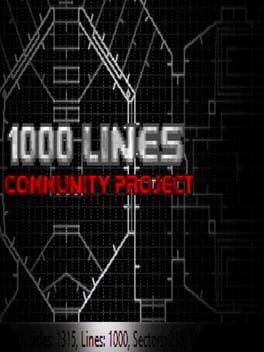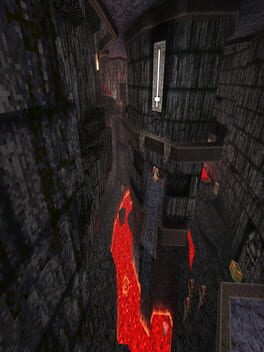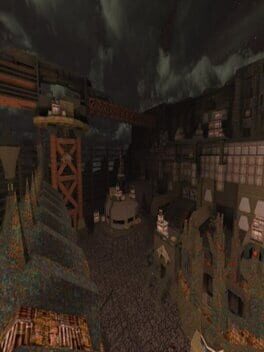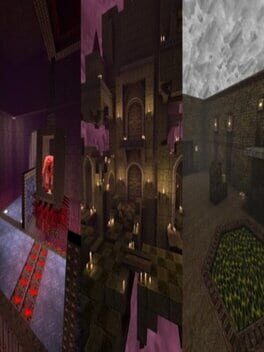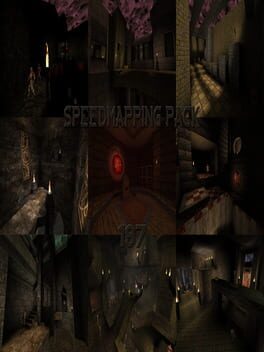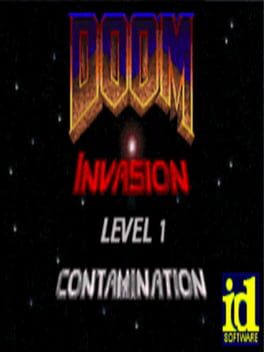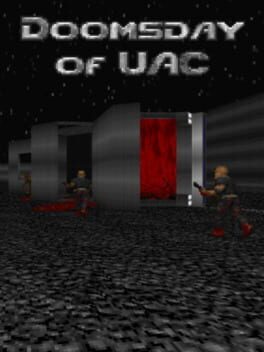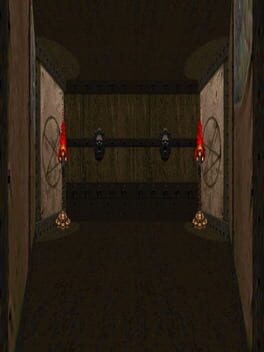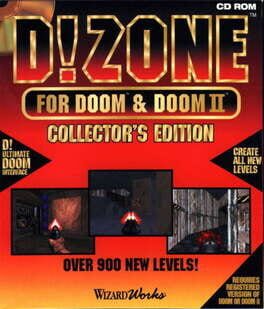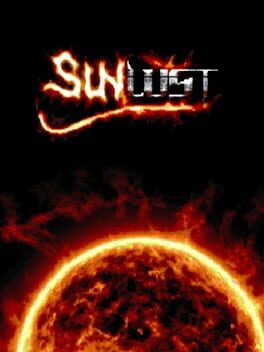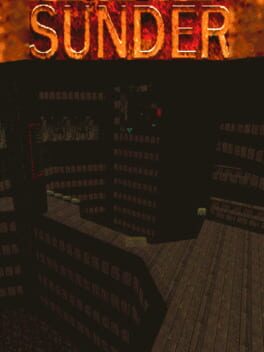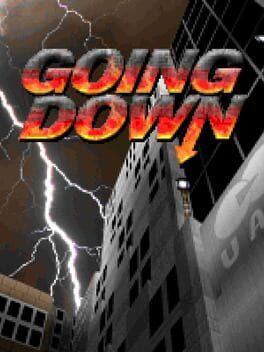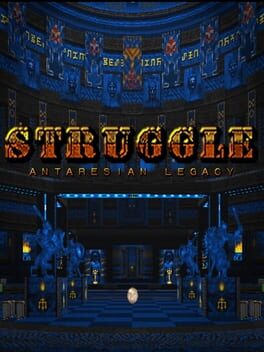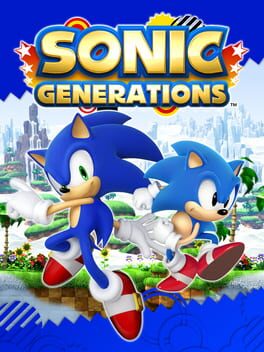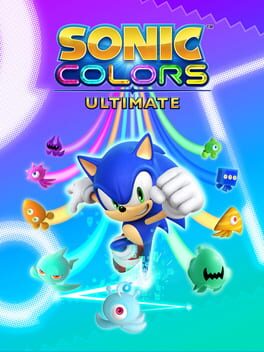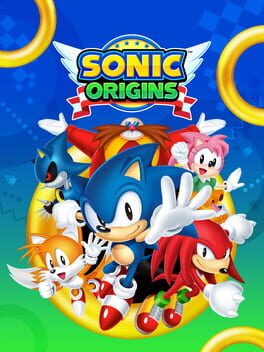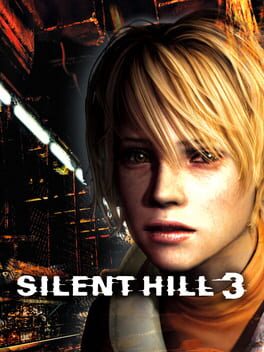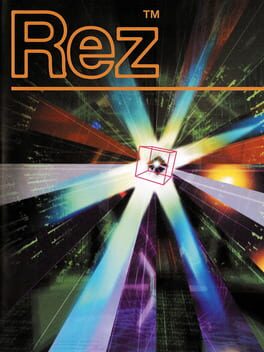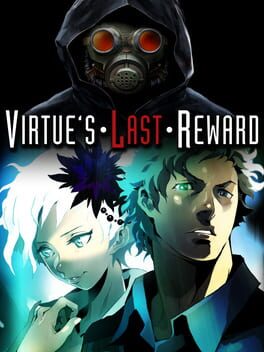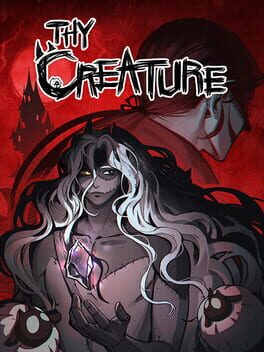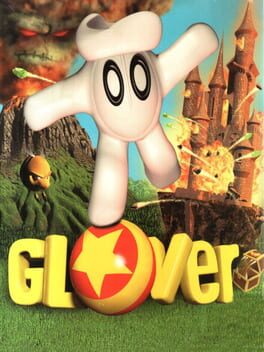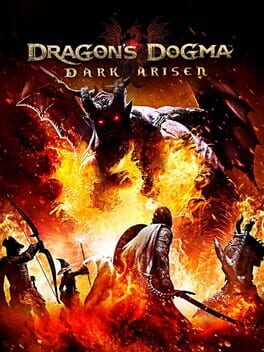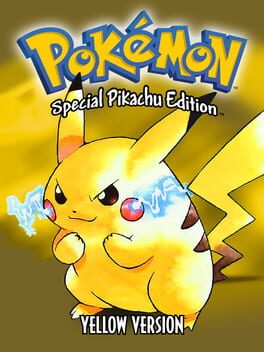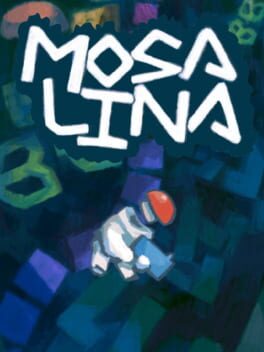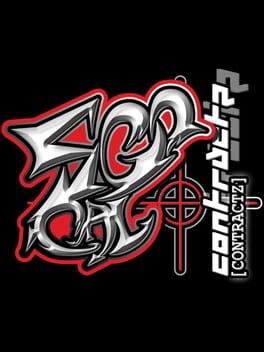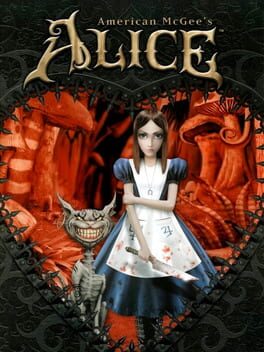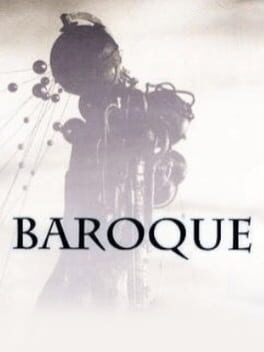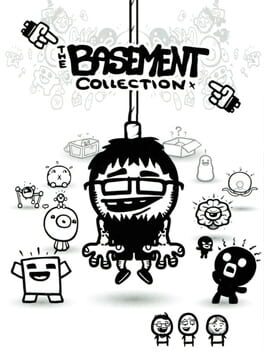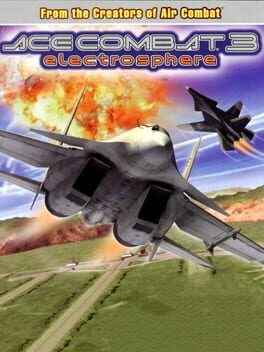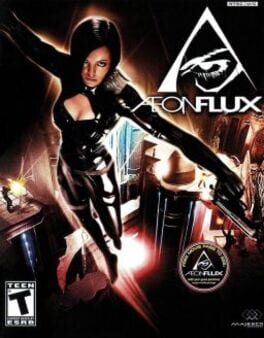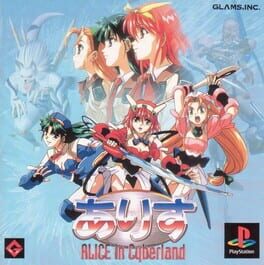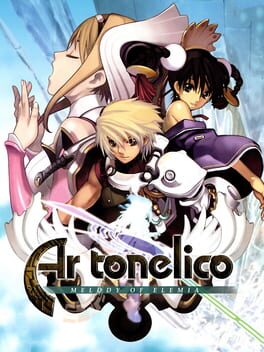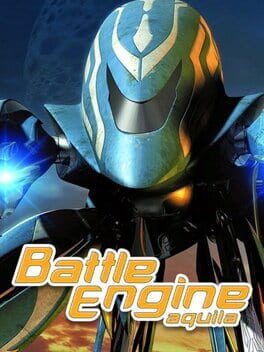Xenosapiens
14 reviews liked by Xenosapiens
I really shouldn’t get Doom II
I really should be bothered, stressed, and highly frustrated by it.
It has some levels that should drive to pure rage, stuff that in any other context I should theoretically complain about.
And yet
I get it
I’ve spoken many times of the importance of Doom both as a space for community and player expression and the pivotal impact it had on the PC scene, and it still feel like I’ve only said understatements. A game that holds up so amazingly well decades later, with some of the most fascinating and fun levels ever put together, and with three episodes that each try to tackle not only different visuals and themes, but also each focuses on a completely different gameplay idea. All this to say that, yeah, I really like the funny killing demon game.
I think suffices to say that Doom II had some mad big shoes to fill, both now for new players like me and especially back then, and I gotta be completely serious here and say: I really didn’t think it could ever do it. Doom was and, in a way, still is an incredibly unique way so tightly designed, so puzzle-like like on its maze-like lay-outs, so calculated with how it decides when to throw curve-balls at you and pull-off novel enemy positioning; Episode 3,Inferno, felt like the final frontier in that regard, the ultimate exploration of the whack-ass and unexpected ideas you could pull off with Doom’s base, at least back then. And if ‘95’s E4 introduced in The Ultimate Doom is anything to go by, perhaps it’s a better idea to leave things as they are to not repeat a formula until it gets stale or expand it to extremes where it just breaks apart.
Thing is, Doom II didn’t even came out in 95, hell, it didn’t release after Ultimate Doom. 1994, more specifically September of 1994, not even a full year after the original’s release, so little time that with the tools at their disposal and without as much as a Q&A department, the team had to test the maps manually, something which they didn’t even could really do properly; so little time that basically the entirety of the original’s base was reused, which led to some funky stuff like only one new weapon being added and one of the newly introduced enemies clearly being a recolored Hell Baron; so little time that the mere idea of wanting to make even more maps that those of the previous release should have spelled absolute disaster. Because, how in the living fuck do you pull it together? How could you expect to produce something that doesn’t feel more that a cobbled together expansion with such a time constraint? How do you make more Doom?
Doom II’s answer to that question is straightforward: you don’t
This not to say the game doesn’t pick up from where it left off, both in that it continues just after the rather disturbing ending of the original, and that everything you can do is lifted straight up from that original adventure; the game’s gonna look at you funny if you play this as your first rodeo, ‘cause it’s not gonna pull any punches, but if you did play the original, the buckle up my friend, hell is loose and it has brought a surprise or two with it.
Things already feel different from the very start, even in the small room of Entryway and the cramped passage-ways of Underhalls, something clearly has changed; you face the same enemies, your arsenal is formed by the same arms you got to meet in your first go around, and yet, the design feels tighter, everything feels faster; you dart around enemies, evading zombies and demons at every turn, they surprise you in unexpected ways, it demands speed of you. The original Doom was never a slower game by any stretch of the imagination, but it was more patience focused, more strategy based, and many of the situations that it created revolved around waiting and taking you’re your best shot or calmly thinking where to go after grabbing a key. In Hell of Earth I can count with the fingers of only one of my hands the moments I let go of the run button, and I say this as the highest form of compliment possible.
And it only keeps going: the super shotgun finally gets introduced, a weapon so good that the only complain I have with it is that it kind of makes the original shotgun obsolete; a fantastic closed range powerhouse that it feels like the developers where whispering ‘’now you gotta go IN’’ as they hand it to you; you also get your arsenal at a much steady and faster pace that in Doom, which is surprising considering that this time the Episode format is completely ditched: the levels go after one another, and unless you die or decide to reset, pistol-starting is now an option rather an obligation, and even then, if you do decide to do it, you can potentially regain most of your weapons even before being half-way done with a level; I myself accidentally pistol-started at Barrels of fun and I’ve never been so glad about a miss click in my life, it was so incredibly fun and exciting and tense even more that it would have been otherwise. Doom II also feels far less stingy with its ammo, in the past you may have switch an arm into another because you just couldn’t use it anymore, now it’s more a matter of ‘’ok, how do I deal with this bunch of fuckers?’’; battles start through ambushes, traps or encounters, and you need to quickly analyze the situation if you want to get through alive in less than a second… and that’s more than enough. Doom II may be cheecky with its enemy placement, but its never unfair, it always gives you enough time to either take cover or to think about what’s the better tool for a certain enemy or group: the rocket launcher may be the best option to geal with that group of Imps, but that Chain-gunner can eat through health in a matter of seconds, why not use the super shot gun on him first and on tap him while you dart around the fire-balls? That’s only a taste of the type of situations of Doom II puts you through, combats that should feel stressful and frustrating, but instead feel exciting and in occasions made me feel an adrenaline like no other; I swear I audibly gasped when I say that amount of enemies at the Suburbs, and I smiled and celebrated as I emerged victorious after dealing with them in a way not even I thought I could.
Levels only get more creative and expansive as they go, The Crusher (aptly named after its main attraction) shows how the rest of the game will play around verticality to create more interesting battles and explorations, as well as introduce unconventional ideas that you might not have expected to see in the previous entry, and that changes your mindset in a way you may not notice at first, but that will certainly will make you be on the look-out. Things that once would have been secrets now are required to be found to progress, it asks of you to be creative, to think outside the box and do what you never would have even conceived of doing. In one of the levels I was trapped, not knowing what to do, but then I noticed a wall with a texture that was extremely different from the rest. I thought that ‘’There’s no fucking way’’. I shoot it. The path opens. Time at time again, places like The Citadelor The Spirit World expect you a level of attention and imagination that the game lends itself to receive, an imagination you have and use to beat even the most seemingly confusing puzzles and mazes; you’ll need to check the map, you’ll need to run, you’ll need to brave, it’s through that that game will reward you, maybe with a Megacharge, maybe with the BFG, maybe with a secret level, who knows! I certainly can’t say for sure ‘cause I feel like I’ve left a ton to even be discovered!
And yeah, I didn’t meant to not use the world ‘’paces’’, more than ever in any of the Doom Episodes, the Hell on Earth maps feel like real parts of a world: expansive and open world urban locations overrun by demons, cultist temples created to stop your advances, old bastions taken and repurposes by the legions of hell to fight against you; even the more ‘’gamey’’ of levels, like Tricks and Traps! or Gotcha!, are excusable because they so fun and even funny that I cannot be mad at them, and as for the rest, they really sell you the idea that you are traversing and meeting your objectives little by little; the narrative has as much presence as the original game, but it has a much greater impact ‘cause not only the stakes are even higher, it also feels like you are progressing through a real story, and that this is a true war against the enemies that face you, new and old.
The game also realized the full potential of its older cast, like how both the Cyberdemon and Spider-Mastermind act much better as level obstacles to evade than actual bosses, and the new faces that arrive are simply incredible; I’ve genuinely never loved and hated an enemy in a videogame equally as I do the Arch-vile, seeing him generated dread in my body, but also made me smile at the opportunity to face such an interesting and unique enemy. The Pain Elementals, Hell Knights an Revenants are all incredible new comer that pile up on the ‘’NEVER STOP MOVING FOR THE LOVE OF GOD’’ mentality, and they are all incredibly memorable, especially the Mancubi, I already loved them in the new games, but hearing them scream their own name as they shoot double projectiles was so fucking memorable. And that final boss.. GOD, finally a Doom boss that requires EVERYTHING you learnt; ammo management, dealing with individual threads, resource usage and even aim, such a fantastic send off that isn’t just a ‘’spam BFG to win fest’’, this is simply outstanding, so fun, so imperfect in the best way imaginable.
If Doom was already a passion project, then Doom II is that even more deranged, more reckless, more… itself. Sandy, Romero and the team knew they could do a true glory fest, and they went even beyond that. Doom II is so experimental, so unique, so unquestionably goofy that I can’t stop gushing about it. It’s more than a blast to beginning to end, it’s a challenge that wants to have as much as fun as you do playing it, and tries out new stuff at each turn, and even those times it doesn’t stick, it keeps being memorable in the best way imaginable.
It's OG Doom at its most savage, at its most free and wild, and its most fun and creative, and I for one have fallen in love with it, and now I can totally see why so many others did too, why so many others keep its memory and spirit alive through .wads and crazy ideas through this one moreso than any other. It’s a game in a way made for itself, but also for everyone that loves Doom, for everyone that loves shooters, for everyone that loves untamed creativeness.
What a fucking magnificent way to start the year, an experience that goes beyond the sum of its parts, and adventure that builds something that evolves and subverts what it once was, the opposite of Hell on Earth.
Rebuilding Earth ought to be a lot more fun than ruining it was
I really should be bothered, stressed, and highly frustrated by it.
It has some levels that should drive to pure rage, stuff that in any other context I should theoretically complain about.
And yet
I get it
I’ve spoken many times of the importance of Doom both as a space for community and player expression and the pivotal impact it had on the PC scene, and it still feel like I’ve only said understatements. A game that holds up so amazingly well decades later, with some of the most fascinating and fun levels ever put together, and with three episodes that each try to tackle not only different visuals and themes, but also each focuses on a completely different gameplay idea. All this to say that, yeah, I really like the funny killing demon game.
I think suffices to say that Doom II had some mad big shoes to fill, both now for new players like me and especially back then, and I gotta be completely serious here and say: I really didn’t think it could ever do it. Doom was and, in a way, still is an incredibly unique way so tightly designed, so puzzle-like like on its maze-like lay-outs, so calculated with how it decides when to throw curve-balls at you and pull-off novel enemy positioning; Episode 3,Inferno, felt like the final frontier in that regard, the ultimate exploration of the whack-ass and unexpected ideas you could pull off with Doom’s base, at least back then. And if ‘95’s E4 introduced in The Ultimate Doom is anything to go by, perhaps it’s a better idea to leave things as they are to not repeat a formula until it gets stale or expand it to extremes where it just breaks apart.
Thing is, Doom II didn’t even came out in 95, hell, it didn’t release after Ultimate Doom. 1994, more specifically September of 1994, not even a full year after the original’s release, so little time that with the tools at their disposal and without as much as a Q&A department, the team had to test the maps manually, something which they didn’t even could really do properly; so little time that basically the entirety of the original’s base was reused, which led to some funky stuff like only one new weapon being added and one of the newly introduced enemies clearly being a recolored Hell Baron; so little time that the mere idea of wanting to make even more maps that those of the previous release should have spelled absolute disaster. Because, how in the living fuck do you pull it together? How could you expect to produce something that doesn’t feel more that a cobbled together expansion with such a time constraint? How do you make more Doom?
Doom II’s answer to that question is straightforward: you don’t
This not to say the game doesn’t pick up from where it left off, both in that it continues just after the rather disturbing ending of the original, and that everything you can do is lifted straight up from that original adventure; the game’s gonna look at you funny if you play this as your first rodeo, ‘cause it’s not gonna pull any punches, but if you did play the original, the buckle up my friend, hell is loose and it has brought a surprise or two with it.
Things already feel different from the very start, even in the small room of Entryway and the cramped passage-ways of Underhalls, something clearly has changed; you face the same enemies, your arsenal is formed by the same arms you got to meet in your first go around, and yet, the design feels tighter, everything feels faster; you dart around enemies, evading zombies and demons at every turn, they surprise you in unexpected ways, it demands speed of you. The original Doom was never a slower game by any stretch of the imagination, but it was more patience focused, more strategy based, and many of the situations that it created revolved around waiting and taking you’re your best shot or calmly thinking where to go after grabbing a key. In Hell of Earth I can count with the fingers of only one of my hands the moments I let go of the run button, and I say this as the highest form of compliment possible.
And it only keeps going: the super shotgun finally gets introduced, a weapon so good that the only complain I have with it is that it kind of makes the original shotgun obsolete; a fantastic closed range powerhouse that it feels like the developers where whispering ‘’now you gotta go IN’’ as they hand it to you; you also get your arsenal at a much steady and faster pace that in Doom, which is surprising considering that this time the Episode format is completely ditched: the levels go after one another, and unless you die or decide to reset, pistol-starting is now an option rather an obligation, and even then, if you do decide to do it, you can potentially regain most of your weapons even before being half-way done with a level; I myself accidentally pistol-started at Barrels of fun and I’ve never been so glad about a miss click in my life, it was so incredibly fun and exciting and tense even more that it would have been otherwise. Doom II also feels far less stingy with its ammo, in the past you may have switch an arm into another because you just couldn’t use it anymore, now it’s more a matter of ‘’ok, how do I deal with this bunch of fuckers?’’; battles start through ambushes, traps or encounters, and you need to quickly analyze the situation if you want to get through alive in less than a second… and that’s more than enough. Doom II may be cheecky with its enemy placement, but its never unfair, it always gives you enough time to either take cover or to think about what’s the better tool for a certain enemy or group: the rocket launcher may be the best option to geal with that group of Imps, but that Chain-gunner can eat through health in a matter of seconds, why not use the super shot gun on him first and on tap him while you dart around the fire-balls? That’s only a taste of the type of situations of Doom II puts you through, combats that should feel stressful and frustrating, but instead feel exciting and in occasions made me feel an adrenaline like no other; I swear I audibly gasped when I say that amount of enemies at the Suburbs, and I smiled and celebrated as I emerged victorious after dealing with them in a way not even I thought I could.
Levels only get more creative and expansive as they go, The Crusher (aptly named after its main attraction) shows how the rest of the game will play around verticality to create more interesting battles and explorations, as well as introduce unconventional ideas that you might not have expected to see in the previous entry, and that changes your mindset in a way you may not notice at first, but that will certainly will make you be on the look-out. Things that once would have been secrets now are required to be found to progress, it asks of you to be creative, to think outside the box and do what you never would have even conceived of doing. In one of the levels I was trapped, not knowing what to do, but then I noticed a wall with a texture that was extremely different from the rest. I thought that ‘’There’s no fucking way’’. I shoot it. The path opens. Time at time again, places like The Citadelor The Spirit World expect you a level of attention and imagination that the game lends itself to receive, an imagination you have and use to beat even the most seemingly confusing puzzles and mazes; you’ll need to check the map, you’ll need to run, you’ll need to brave, it’s through that that game will reward you, maybe with a Megacharge, maybe with the BFG, maybe with a secret level, who knows! I certainly can’t say for sure ‘cause I feel like I’ve left a ton to even be discovered!
And yeah, I didn’t meant to not use the world ‘’paces’’, more than ever in any of the Doom Episodes, the Hell on Earth maps feel like real parts of a world: expansive and open world urban locations overrun by demons, cultist temples created to stop your advances, old bastions taken and repurposes by the legions of hell to fight against you; even the more ‘’gamey’’ of levels, like Tricks and Traps! or Gotcha!, are excusable because they so fun and even funny that I cannot be mad at them, and as for the rest, they really sell you the idea that you are traversing and meeting your objectives little by little; the narrative has as much presence as the original game, but it has a much greater impact ‘cause not only the stakes are even higher, it also feels like you are progressing through a real story, and that this is a true war against the enemies that face you, new and old.
The game also realized the full potential of its older cast, like how both the Cyberdemon and Spider-Mastermind act much better as level obstacles to evade than actual bosses, and the new faces that arrive are simply incredible; I’ve genuinely never loved and hated an enemy in a videogame equally as I do the Arch-vile, seeing him generated dread in my body, but also made me smile at the opportunity to face such an interesting and unique enemy. The Pain Elementals, Hell Knights an Revenants are all incredible new comer that pile up on the ‘’NEVER STOP MOVING FOR THE LOVE OF GOD’’ mentality, and they are all incredibly memorable, especially the Mancubi, I already loved them in the new games, but hearing them scream their own name as they shoot double projectiles was so fucking memorable. And that final boss.. GOD, finally a Doom boss that requires EVERYTHING you learnt; ammo management, dealing with individual threads, resource usage and even aim, such a fantastic send off that isn’t just a ‘’spam BFG to win fest’’, this is simply outstanding, so fun, so imperfect in the best way imaginable.
If Doom was already a passion project, then Doom II is that even more deranged, more reckless, more… itself. Sandy, Romero and the team knew they could do a true glory fest, and they went even beyond that. Doom II is so experimental, so unique, so unquestionably goofy that I can’t stop gushing about it. It’s more than a blast to beginning to end, it’s a challenge that wants to have as much as fun as you do playing it, and tries out new stuff at each turn, and even those times it doesn’t stick, it keeps being memorable in the best way imaginable.
It's OG Doom at its most savage, at its most free and wild, and its most fun and creative, and I for one have fallen in love with it, and now I can totally see why so many others did too, why so many others keep its memory and spirit alive through .wads and crazy ideas through this one moreso than any other. It’s a game in a way made for itself, but also for everyone that loves Doom, for everyone that loves shooters, for everyone that loves untamed creativeness.
What a fucking magnificent way to start the year, an experience that goes beyond the sum of its parts, and adventure that builds something that evolves and subverts what it once was, the opposite of Hell on Earth.
Rebuilding Earth ought to be a lot more fun than ruining it was
Despite being one of the most popular and influential games of all time, somehow, Doom 2 is still severely underrated.
Someone who agrees is Danbo, fellow Doom lover and developer of the shmup Blue Revolver. In his old article (https://blog.danbo.vg/post/50094276897/the-most-misunderstood-game-of-all-time) he explains:
"While Doom was no doubt the product of a bunch of nerds doing what they love, the game offers a more intelligent gameplay palette than just about any other pure FPS in the world...Doom perfection is achieved where the visceral meets the intelligent."
Everyone knows the obvious: the timeless joy of the Super Shotgun, the surreal demonic aesthetic, the beloved metal MIDIs that rip off Metallica and Slayer, and so on. But there's an iceberg of elements below the surface that oft go overlooked by those uninitiated in deeper Dooming ways. To bring up just a few examples:
The famous BFG is a brilliant, quirky weapon that operates like some bizarre hybrid of a delayed-fire rocket launcher and shotgun. The ball does a good chunk of damage, but the real firepower is in the spread of 40 invisible tracers that shoot out from you a bit after the ball explodes, in the direction you initially fired. You can fire at packs of enemies to spread out the damage for crowd control, or get right up next to something to put all the tracers on it for massive destruction (both incredibly useful and incredibly dangerous against Cyberdemons). You can fire the BFG at long range, do other things (run around, switch weapons), then move into position for the tracers as the ball makes impact. You can hide behind cover, shoot the ball into a wall, then quickly peek outside cover to forgo the ball damage in favor of safety. You can even shoot, realize that you're in a bad position, and retreat, wasting ammo but possibly saving your life.
Switching weapons is both critical to success and surprisingly slow, especially if you compare with Doom's modern entries. But this adds commitment, that deep shard of the action game's soul, in a way that ties into the ever-present ammo system. Say you pump two Super Shotgun blasts into a Revenant, and are confident that it's a hair away from death. You can switch to the Chaingun to fire a quick burst, which is highly ammo-efficient, but takes time and leaves you vulnerable. You can stick with the Super Shotgun, which trades ammo for safety and speed. You can even use the Rocket Launcher to put heavy damage on another foe while killing the first with splash damage, but this opens the door for the classic-yet-catastrophic rocket to your own face. id could have easily made the weapon switch speed near-instant, but whether by intention or happenstance, they didn't, and the game is better for it.
I could go on and on about all the nuances that add to the game, but there are two critical elements that set Doom apart from every other FPS. The first is its emphasis on space control. Take the humble Pinky, for instance: low health and it's bites are easily dodged, so not much threat, right? Well, put Doomguy in a room with fifty of them (Doom 2 MAP08: Tricks and Traps for instance) and the assessment rapidly changes. If you're not careful, you'll be surrounded on all sides, and while killing a few may be easy, others will quickly rush into the gaps to further constrict you. Controlling territory with movement and smart (or copious) use of ammo is critical to survival. Now imagine how much the situation would evolve with just a single Archvile added to the mix!
The other aspect, almost completely unique to Doom as far as I know, is monster infighting and its importance. Baiting one monster type to attack another will cause it to switch aggro and retaliate. Purposefully leaving some monsters alive to tear each other apart can save you tons of ammo, but also presents a huge risk, as the resulting fight is more chaotic and dangerous.
A great example is the slime pit in Alien Vendetta's MAP14: Overwhelming Odds. The whole pit is filled with Pinkies, and the only way to exit the pit is a lift opposite the switch you need to hit. But hitting the switch releases two Cyberdemons, who can easily kill you if you get trapped, but can also easily dispatch the Pinkies and save you lots of ammo. How many Pinkies do you kill to get to the lift safely, vs. how many do you leave alive for the Cyberdemons? A little later, you need to return to the pit to activate another switch, which releases a massive cloud of Cacodemons. Do you kill the Cyberdemons before hitting the switch, while the field is nice and clear, but go it alone against the Cacos? Or do you leave the Cyberdemons to thin out the horde, then risk fighting them with random Cacos floating around? Or maybe you only kill one Cyberdemon to split the difference? I've tried all of these strategies, and each has its own strengths, weaknesses, and gameplay flow.
It's truly astonishing to me how much id managed to get right so early on. The fundamentals here are rock-solid, and the blend of fast paced action, using enemies against each other, heavy resource management, and a thick coating of atmosphere for good measure prefigures Resident Evil 4 by a decade. All the dynamic layers of decision-making I yearn for in action games are here, weaving into each other in wonderful interplay. Split-second decisions and execution are, as always, a matter of life and death, but also affect your health and ammo, which leaks into the next encounters. Making too hasty of a retreat at the wrong time can cost you precious territory and create openings for monsters to stake out unfavorable positions, the consequences of which might not be felt until later in the fight. The overall route you devise for tackling a map can vastly change how the onslaught plays out, both in terms of what gear you have access to and what mix of monsters are active.
It should be an obvious conclusion by now that the map has a massive impact on gameplay, especially if you are pistol starting. (sidenote: you should absolutely pistol start levels, lower the difficulty if you have to) Placement of monsters, weapons, resources, and geometry will make or break the experience. and the true mapping virtuoso has a commanding sense of how to arrange these elements to create gripping scenarios that challenge, terrify, surprise, and delight.
Danbo again:
"It’s not artificial intelligence you fight when you’re locked in a room full of Barons of Hell and Revenants and voicelessly asked to pick a side in the resulting infighting (It’ll take more ammo to finish off the barons, but revenants are more likely to give you a nasty right hook or slap you with a rocket in the process) - it’s human intelligence."
Doom 1 and 2's base maps, given the time and constraints id was working under, are an admirable work and good bit of fun, and have undoubtedly served as a crucial creative jumping-off point for the community. But they weren't able to reveal the true brilliance of the game's design: it would be the Casali brothers' Plutonia Experiment, distributed commercially in Final Doom by id a couple years after Doom 2, that began to show off how careful arrangement could bring out the best (and most deadly) in each monster.
As Doomworld's Not Jabba puts it, in their epic history Roots of Doom Mapping (https://www.doomworld.com/25years/the-roots-of-doom-mapping/):
"The Casali brothers laid so much groundwork that all combat-oriented mapping has been a series of footnotes to Plutonia."
The Doom 2 enemies in particular are some of the best ever made, and in Plutonia we can see that each contribute something unique. Hell Knights are balanced bruisers who eat space, health, and ammo in equal measure. Revenants are fragile, but their fast movespeed and homing missiles demand nimble footwork. Chaingunners fall over to stiff breezes, but call forth lead torrents within their sightlines. Mancubi and Arachnotrons lay down blankets of fire, but can be easily dodged close up and are especially prone to starting infights. Pain Elementals are harmless if you stop their Lost Souls from spawning, but sponge up piles of ammo if you let them roam free for too long. Archviles exert their tyrannical rule through long range, delayed-hitscan fire attacks, and they brutally punish inaction by resurrecting nearby fallen foes.
Since the release of Final Doom, Doom's almost 30-year-old community has been steadily building on this foundation, its continued vitality attributable to a complex mix of historical circumstance, id's openness to fan modifications (a stance I am immensely greatful for, and has been highly influential in PC gaming at large), and love of Doom. I confess that I have only begun to dip my toes into the vast world of custom maps, but the tremendous fun I've had so far, as well as the glowing reception for projects like Scythe 2, Valiant, Ancient Aliens, and Sunlust, has me eager to dive deeper. This is a community that most games would kill for, and the fact that it's gone largely overlooked, even by many fellow lovers of game mechanics, can only be described as utterly criminal.
An all-around great resource for learning more is MtPain27's Dean of Doom Youtube channel (https://www.youtube.com/c/MtPain27), where he reviews both new and old WADs level-by-level. His love of Doom is infectious, and he gives a great sense for the age, breadth, and brilliance of the mapping scene. Skilled players like Decino (https://www.youtube.com/c/decino) can also help show off the deeper aspects of gameplay, as well as engine quirks to add to your knowledge repertoire.
There are certainly some problems with the game (random damage and berserk with the chainsaw come to mind) but these are negligible when juxtaposed with the whole. I am utterly awed and humbled by what has been created here, and I don't see anything comparable emerging again. This is the type of game you could spend your whole life exploring and mastering.
Simply put: One of the greatest games of all time.
Someone who agrees is Danbo, fellow Doom lover and developer of the shmup Blue Revolver. In his old article (https://blog.danbo.vg/post/50094276897/the-most-misunderstood-game-of-all-time) he explains:
"While Doom was no doubt the product of a bunch of nerds doing what they love, the game offers a more intelligent gameplay palette than just about any other pure FPS in the world...Doom perfection is achieved where the visceral meets the intelligent."
Everyone knows the obvious: the timeless joy of the Super Shotgun, the surreal demonic aesthetic, the beloved metal MIDIs that rip off Metallica and Slayer, and so on. But there's an iceberg of elements below the surface that oft go overlooked by those uninitiated in deeper Dooming ways. To bring up just a few examples:
The famous BFG is a brilliant, quirky weapon that operates like some bizarre hybrid of a delayed-fire rocket launcher and shotgun. The ball does a good chunk of damage, but the real firepower is in the spread of 40 invisible tracers that shoot out from you a bit after the ball explodes, in the direction you initially fired. You can fire at packs of enemies to spread out the damage for crowd control, or get right up next to something to put all the tracers on it for massive destruction (both incredibly useful and incredibly dangerous against Cyberdemons). You can fire the BFG at long range, do other things (run around, switch weapons), then move into position for the tracers as the ball makes impact. You can hide behind cover, shoot the ball into a wall, then quickly peek outside cover to forgo the ball damage in favor of safety. You can even shoot, realize that you're in a bad position, and retreat, wasting ammo but possibly saving your life.
Switching weapons is both critical to success and surprisingly slow, especially if you compare with Doom's modern entries. But this adds commitment, that deep shard of the action game's soul, in a way that ties into the ever-present ammo system. Say you pump two Super Shotgun blasts into a Revenant, and are confident that it's a hair away from death. You can switch to the Chaingun to fire a quick burst, which is highly ammo-efficient, but takes time and leaves you vulnerable. You can stick with the Super Shotgun, which trades ammo for safety and speed. You can even use the Rocket Launcher to put heavy damage on another foe while killing the first with splash damage, but this opens the door for the classic-yet-catastrophic rocket to your own face. id could have easily made the weapon switch speed near-instant, but whether by intention or happenstance, they didn't, and the game is better for it.
I could go on and on about all the nuances that add to the game, but there are two critical elements that set Doom apart from every other FPS. The first is its emphasis on space control. Take the humble Pinky, for instance: low health and it's bites are easily dodged, so not much threat, right? Well, put Doomguy in a room with fifty of them (Doom 2 MAP08: Tricks and Traps for instance) and the assessment rapidly changes. If you're not careful, you'll be surrounded on all sides, and while killing a few may be easy, others will quickly rush into the gaps to further constrict you. Controlling territory with movement and smart (or copious) use of ammo is critical to survival. Now imagine how much the situation would evolve with just a single Archvile added to the mix!
The other aspect, almost completely unique to Doom as far as I know, is monster infighting and its importance. Baiting one monster type to attack another will cause it to switch aggro and retaliate. Purposefully leaving some monsters alive to tear each other apart can save you tons of ammo, but also presents a huge risk, as the resulting fight is more chaotic and dangerous.
A great example is the slime pit in Alien Vendetta's MAP14: Overwhelming Odds. The whole pit is filled with Pinkies, and the only way to exit the pit is a lift opposite the switch you need to hit. But hitting the switch releases two Cyberdemons, who can easily kill you if you get trapped, but can also easily dispatch the Pinkies and save you lots of ammo. How many Pinkies do you kill to get to the lift safely, vs. how many do you leave alive for the Cyberdemons? A little later, you need to return to the pit to activate another switch, which releases a massive cloud of Cacodemons. Do you kill the Cyberdemons before hitting the switch, while the field is nice and clear, but go it alone against the Cacos? Or do you leave the Cyberdemons to thin out the horde, then risk fighting them with random Cacos floating around? Or maybe you only kill one Cyberdemon to split the difference? I've tried all of these strategies, and each has its own strengths, weaknesses, and gameplay flow.
It's truly astonishing to me how much id managed to get right so early on. The fundamentals here are rock-solid, and the blend of fast paced action, using enemies against each other, heavy resource management, and a thick coating of atmosphere for good measure prefigures Resident Evil 4 by a decade. All the dynamic layers of decision-making I yearn for in action games are here, weaving into each other in wonderful interplay. Split-second decisions and execution are, as always, a matter of life and death, but also affect your health and ammo, which leaks into the next encounters. Making too hasty of a retreat at the wrong time can cost you precious territory and create openings for monsters to stake out unfavorable positions, the consequences of which might not be felt until later in the fight. The overall route you devise for tackling a map can vastly change how the onslaught plays out, both in terms of what gear you have access to and what mix of monsters are active.
It should be an obvious conclusion by now that the map has a massive impact on gameplay, especially if you are pistol starting. (sidenote: you should absolutely pistol start levels, lower the difficulty if you have to) Placement of monsters, weapons, resources, and geometry will make or break the experience. and the true mapping virtuoso has a commanding sense of how to arrange these elements to create gripping scenarios that challenge, terrify, surprise, and delight.
Danbo again:
"It’s not artificial intelligence you fight when you’re locked in a room full of Barons of Hell and Revenants and voicelessly asked to pick a side in the resulting infighting (It’ll take more ammo to finish off the barons, but revenants are more likely to give you a nasty right hook or slap you with a rocket in the process) - it’s human intelligence."
Doom 1 and 2's base maps, given the time and constraints id was working under, are an admirable work and good bit of fun, and have undoubtedly served as a crucial creative jumping-off point for the community. But they weren't able to reveal the true brilliance of the game's design: it would be the Casali brothers' Plutonia Experiment, distributed commercially in Final Doom by id a couple years after Doom 2, that began to show off how careful arrangement could bring out the best (and most deadly) in each monster.
As Doomworld's Not Jabba puts it, in their epic history Roots of Doom Mapping (https://www.doomworld.com/25years/the-roots-of-doom-mapping/):
"The Casali brothers laid so much groundwork that all combat-oriented mapping has been a series of footnotes to Plutonia."
The Doom 2 enemies in particular are some of the best ever made, and in Plutonia we can see that each contribute something unique. Hell Knights are balanced bruisers who eat space, health, and ammo in equal measure. Revenants are fragile, but their fast movespeed and homing missiles demand nimble footwork. Chaingunners fall over to stiff breezes, but call forth lead torrents within their sightlines. Mancubi and Arachnotrons lay down blankets of fire, but can be easily dodged close up and are especially prone to starting infights. Pain Elementals are harmless if you stop their Lost Souls from spawning, but sponge up piles of ammo if you let them roam free for too long. Archviles exert their tyrannical rule through long range, delayed-hitscan fire attacks, and they brutally punish inaction by resurrecting nearby fallen foes.
Since the release of Final Doom, Doom's almost 30-year-old community has been steadily building on this foundation, its continued vitality attributable to a complex mix of historical circumstance, id's openness to fan modifications (a stance I am immensely greatful for, and has been highly influential in PC gaming at large), and love of Doom. I confess that I have only begun to dip my toes into the vast world of custom maps, but the tremendous fun I've had so far, as well as the glowing reception for projects like Scythe 2, Valiant, Ancient Aliens, and Sunlust, has me eager to dive deeper. This is a community that most games would kill for, and the fact that it's gone largely overlooked, even by many fellow lovers of game mechanics, can only be described as utterly criminal.
An all-around great resource for learning more is MtPain27's Dean of Doom Youtube channel (https://www.youtube.com/c/MtPain27), where he reviews both new and old WADs level-by-level. His love of Doom is infectious, and he gives a great sense for the age, breadth, and brilliance of the mapping scene. Skilled players like Decino (https://www.youtube.com/c/decino) can also help show off the deeper aspects of gameplay, as well as engine quirks to add to your knowledge repertoire.
There are certainly some problems with the game (random damage and berserk with the chainsaw come to mind) but these are negligible when juxtaposed with the whole. I am utterly awed and humbled by what has been created here, and I don't see anything comparable emerging again. This is the type of game you could spend your whole life exploring and mastering.
Simply put: One of the greatest games of all time.
Super Mario 64
1996
Pikmin
2001
Sonic the Hedgehog
2006
2006 wasn't a good year for me. Being on the autism spectrum, middle school was especially tough to adjust to. Everyone else was growing up around me, getting into more mature-rated games and talking about subject matter I wouldn't understand until much later. I was in 8th grade and had accepted that I wasn't going to fit in. I tried my best to hide my autism throughout 6th and 7th grade but everyone knew by then. Getting bullied and being sent to the principal's office because I wasn't paying attention in class was the norm. At this point in my life there was little for me to look forward to.
But as much as I wanted to give up, as much as I dreaded each day, I had to keep going. I had to.
Because Sonic The Hedgehog for the Xbox 360 was coming out soon.
I'm not saying Sonic The Hedgehog 2006 alone helped push me forward, or that I would have actually ended my life, but I was at a point where I desperately needed some joy and Sonic 06 was the next big thing to look forward to. Sonic 06 was THE reason I got an Xbox 360 and I loved it. As far as I was concerned, this was the biggest, most epic game I had played. A true showcase for what this new generation of consoles were capable of. It's not like I didn't notice the glitches, the long load times, or some of the more laughable aspects of its story. But all that stuff didn't matter to 14-year-old me. I beat all four stories, did all town missions, got all S ranks, and nabbed all of the achievements. Over the years, I've probably spent well over a few hundred hours playing this game. Admittedly, it's not a title I've gone back to much for well over a decade but there was a period where it might have been in my top 10 most played games of all time.
For most, Sonic 06 is seen as an appallingly unfinished train wreck of the highest caliber. Within that group however comes two wildly different opinions. Some have deemed the game unsalvageable and doomed to fail even if it had all the extra dev time in the world. The other opinion is that Sonic 06 could have been something truly special if given the extra time needed to finish it. Personally, I'm of the camp that there's simply too much wrong about 06 on a fundamental level for there to be much salvaged from it. Even fan projects like Project-06, meant to "fix" the game, do just as good a job highlighting the underlying issues (level design focused too heavily on scripted bits, an emphasis on dull combat that kills the flow, and "amigo characters" that feel redundant when put alongside the three main heroes) as it does showing any hidden potential.
What was once a title that brought me great joy and helped keep me going in a dark part of my life is now something I see as a huge mark against not only Sonic, but Sega's track record. A result of all the worst business practices Sega kept indulging in while floundering as a 3rd party publisher. An embarrassment that looms over every new Sonic release. A reminder that Sega will always choose the shortsighted and greedy option. I'm not entirely sure when my opinion on 06 started to shift but I think it was around my sophomore year in high school. By that point I had made new friends, felt more comfortable around others my age, and was generally just having a better time. I didn't need to lie to myself about Sonic 06 anymore.
---
As terrible as it may be, I encourage anyone who hasn't played Sonic 06 to give it a try for themselves. While there might be dozens, if not hundreds of think pieces and video essays about it, most only look at the game on a surface level for shits and giggles. I think it's worth digging deeper and seeing for yourself what a fumble of this magnitude plays like. The history behind 06's development is nothing short of captivating as well but just make sure you do the homework yourself and don't bother with videos like Matt McMuscles "Wha Happun?" which unironically use GameFAQs console war forum posts as sources.
But as much as I wanted to give up, as much as I dreaded each day, I had to keep going. I had to.
Because Sonic The Hedgehog for the Xbox 360 was coming out soon.
I'm not saying Sonic The Hedgehog 2006 alone helped push me forward, or that I would have actually ended my life, but I was at a point where I desperately needed some joy and Sonic 06 was the next big thing to look forward to. Sonic 06 was THE reason I got an Xbox 360 and I loved it. As far as I was concerned, this was the biggest, most epic game I had played. A true showcase for what this new generation of consoles were capable of. It's not like I didn't notice the glitches, the long load times, or some of the more laughable aspects of its story. But all that stuff didn't matter to 14-year-old me. I beat all four stories, did all town missions, got all S ranks, and nabbed all of the achievements. Over the years, I've probably spent well over a few hundred hours playing this game. Admittedly, it's not a title I've gone back to much for well over a decade but there was a period where it might have been in my top 10 most played games of all time.
For most, Sonic 06 is seen as an appallingly unfinished train wreck of the highest caliber. Within that group however comes two wildly different opinions. Some have deemed the game unsalvageable and doomed to fail even if it had all the extra dev time in the world. The other opinion is that Sonic 06 could have been something truly special if given the extra time needed to finish it. Personally, I'm of the camp that there's simply too much wrong about 06 on a fundamental level for there to be much salvaged from it. Even fan projects like Project-06, meant to "fix" the game, do just as good a job highlighting the underlying issues (level design focused too heavily on scripted bits, an emphasis on dull combat that kills the flow, and "amigo characters" that feel redundant when put alongside the three main heroes) as it does showing any hidden potential.
What was once a title that brought me great joy and helped keep me going in a dark part of my life is now something I see as a huge mark against not only Sonic, but Sega's track record. A result of all the worst business practices Sega kept indulging in while floundering as a 3rd party publisher. An embarrassment that looms over every new Sonic release. A reminder that Sega will always choose the shortsighted and greedy option. I'm not entirely sure when my opinion on 06 started to shift but I think it was around my sophomore year in high school. By that point I had made new friends, felt more comfortable around others my age, and was generally just having a better time. I didn't need to lie to myself about Sonic 06 anymore.
---
As terrible as it may be, I encourage anyone who hasn't played Sonic 06 to give it a try for themselves. While there might be dozens, if not hundreds of think pieces and video essays about it, most only look at the game on a surface level for shits and giggles. I think it's worth digging deeper and seeing for yourself what a fumble of this magnitude plays like. The history behind 06's development is nothing short of captivating as well but just make sure you do the homework yourself and don't bother with videos like Matt McMuscles "Wha Happun?" which unironically use GameFAQs console war forum posts as sources.
Devil May Cry
2001
This is probably still my favorite game in the franchise. Might sound strange to some since the game's combat is a lot more limited when compared to later entries but that's part of why I love it. Every move in Dante's arsenal is worth using at some point or another and I do mean EVERY move. Charging Ebony and Ivory with DT to increase your style against Griffon. Locking Nobodies in place with Round Trip. Shotgun cancelling Bloody Maries. Vortexing Phantom to death during the chase scenes. Every move I ever doubted on my first playthrough back in 2012 have proven me wrong and become staples in my moveset in the years since. While it's an absolute blast experimenting with Dante's expanded kits in later titles, it's just as rewarding finding new uses for moves you once thought had been depleted of all their worth.
A big contributing factor to all this is the stellar boss lineup. I don't know how Hideki Kamiya and his team did it, but Team Little Devils created one of the best rogues galleries in an action game all the way back in 2001. This game's roster of baddies will test you, and I mean fucking TEST you on all of your defensive options as well as your offensive ones. Even enemy attacks that you once thought you mastered your way around will turn out to have an even more efficient way of dealing with them as your skill and understanding of the mechanics increase. You're always learning new things against these foes and that goes doubly so for the bosses. Phantom, Griffon, Nero Angelo, even the dreaded Nightmare (ESPECIALLY Nightmare) all offer many lessons you'll take to heart. Some of these are exclusive for their respective fights, like learning how Nightmare's cores work. Others are multi-purpose, like figuring out double jumping before striking down on Phantom from above deals more damage. The game even uses its Secret Missions to teach some of these techniques and it does so with more elegance than the missions in later DMC games.
To top my love for this game off, I want to give a special mention to this game's wonderfully eerie atmosphere. Something later DMC games lost. Mundus' castle feels like a place lost to time. The world feels alive, not in a "Oh wow, there's so many moving objects and blah blah blah" sort of way but more in a "The castle is a liminal space that's trying to swallow you whole" kind of way. The early levels have music that sounds like the dead are having a ballroom dance in an adjacent room while later stages have music that feels utterly oppressive, like you pissed off the castle itself and now it's trapped you within its walls. I really wish the franchise would return to this kind of horror instead of the dull, lifeless environments found in later installments.
Then again, it's not so surprising DMC1 would have these horror elements, along with more focused gameplay. The title was going to be Resident Evil 4 at one point in development and it seems a bit of that classic RE game flavor found its way into the final product. When taking that factoid into account, it's a miracle DMC1 is not only a game so fantastic that it kickstarted a brand new franchise, but one to make such a strong impact on the future of high quality action games.
Devil May Cry's a rocking don't come a knocking baby, yeah!
A big contributing factor to all this is the stellar boss lineup. I don't know how Hideki Kamiya and his team did it, but Team Little Devils created one of the best rogues galleries in an action game all the way back in 2001. This game's roster of baddies will test you, and I mean fucking TEST you on all of your defensive options as well as your offensive ones. Even enemy attacks that you once thought you mastered your way around will turn out to have an even more efficient way of dealing with them as your skill and understanding of the mechanics increase. You're always learning new things against these foes and that goes doubly so for the bosses. Phantom, Griffon, Nero Angelo, even the dreaded Nightmare (ESPECIALLY Nightmare) all offer many lessons you'll take to heart. Some of these are exclusive for their respective fights, like learning how Nightmare's cores work. Others are multi-purpose, like figuring out double jumping before striking down on Phantom from above deals more damage. The game even uses its Secret Missions to teach some of these techniques and it does so with more elegance than the missions in later DMC games.
To top my love for this game off, I want to give a special mention to this game's wonderfully eerie atmosphere. Something later DMC games lost. Mundus' castle feels like a place lost to time. The world feels alive, not in a "Oh wow, there's so many moving objects and blah blah blah" sort of way but more in a "The castle is a liminal space that's trying to swallow you whole" kind of way. The early levels have music that sounds like the dead are having a ballroom dance in an adjacent room while later stages have music that feels utterly oppressive, like you pissed off the castle itself and now it's trapped you within its walls. I really wish the franchise would return to this kind of horror instead of the dull, lifeless environments found in later installments.
Then again, it's not so surprising DMC1 would have these horror elements, along with more focused gameplay. The title was going to be Resident Evil 4 at one point in development and it seems a bit of that classic RE game flavor found its way into the final product. When taking that factoid into account, it's a miracle DMC1 is not only a game so fantastic that it kickstarted a brand new franchise, but one to make such a strong impact on the future of high quality action games.
Devil May Cry's a rocking don't come a knocking baby, yeah!
Devil May Cry 2
2003
Devil May Cry 2 is one of the most fascinating missteps I've ever seen. The only thing you ever hear about DMC2 is that it sucks, and it truly does, but the level at which DMC2 utterly butchers everything great about the original DMC1 makes the game feel like a fever dream. Even at the most fundamental level all of Dante's tools from the first game feel incredibly stiff and slow. There's simply no joy to any of his moves.
Somehow this isn't DMC2's biggest shortcoming. That would be the enemies. Sometimes I wonder if the foes in this game were even designed for a game where the player character has firearms, because most enemies don't seem to mind getting mowed down by a hail of gunfire from across the map. This is largely due to two factors. The first is that nearly all enemies lack any kind of a gap-closer. The second is that your guns stun lock most enemies regardless of what they're doing. This means the only challenge combat can give you is from the cheapest methods possible. Enemies attacking offscreen without proper sound cues is quite a popular one. Another is enemies hovering outside of melee range, and having lord-knows how much health. Every enemy encounter is either so trivially short that you'll forget it even happened a minute later, or so painfully drawn out that you'll legitimately start questioning your life choices. I honestly feel like calling the game boring is a massive understatement. I don't think mankind has invented a word strong enough to describe the amount of tedium DMC2 has to offer.
This alternate form of melatonin "only" lasts 4 hours if you're stupid enough to play both Dante and Lucia's campaigns(like me!), but you'll feel like you wasted an eternity on it. Even after all I've said, NOTHING will prepare you for how much of a slog DMC2 is. Most bad games offer some semblance of entertainment, even if it's from unintentional means, but DMC2 offers nothing but regret and absolute bewilderment that this franchise somehow continued after this joyless, aimless mess.
The game's style indicator says "Don't Worry" when you have a D rank, but you should. You really, really should.
Somehow this isn't DMC2's biggest shortcoming. That would be the enemies. Sometimes I wonder if the foes in this game were even designed for a game where the player character has firearms, because most enemies don't seem to mind getting mowed down by a hail of gunfire from across the map. This is largely due to two factors. The first is that nearly all enemies lack any kind of a gap-closer. The second is that your guns stun lock most enemies regardless of what they're doing. This means the only challenge combat can give you is from the cheapest methods possible. Enemies attacking offscreen without proper sound cues is quite a popular one. Another is enemies hovering outside of melee range, and having lord-knows how much health. Every enemy encounter is either so trivially short that you'll forget it even happened a minute later, or so painfully drawn out that you'll legitimately start questioning your life choices. I honestly feel like calling the game boring is a massive understatement. I don't think mankind has invented a word strong enough to describe the amount of tedium DMC2 has to offer.
This alternate form of melatonin "only" lasts 4 hours if you're stupid enough to play both Dante and Lucia's campaigns(like me!), but you'll feel like you wasted an eternity on it. Even after all I've said, NOTHING will prepare you for how much of a slog DMC2 is. Most bad games offer some semblance of entertainment, even if it's from unintentional means, but DMC2 offers nothing but regret and absolute bewilderment that this franchise somehow continued after this joyless, aimless mess.
The game's style indicator says "Don't Worry" when you have a D rank, but you should. You really, really should.
Spider-Man
2000
Neversoft's Spider-Man is the perfect example of a game that gets by largely due to its charm. Mechanically, this is a very shallow action game with 5-ish different enemy types and levels that tend to last a mere minute long. I wasn't revisiting this game for the combat or puzzles. I revisited it because I love Spider-Man.
No other Spider-Man game feels like such a love letter to the franchise. Neversoft had already shown with the Tony Hawk Pro Skater games that they'll always share their adoration with a game's subject matter if they're given the chance and this is exactly what they did here. This game is like a time capsule of 90's Spider-Man, before the movies and ultimate comics would go on to inspire most future webhead stories. I don't mean that as a jab at the utterly spectacular Sam Raimi films or anything else that came after the turn of the millennium but the start of the 00's were also the start of a new era for Spider-Man. Neversoft's Spider-Man may have come out in 2000 but its development started in 1999 and the developers used that decade of Spider-Man media as a base for their game. I'm not talking about continuity as much as I am the general tone. Spider-Man 2000 is a very upbeat, fun game that only takes itself as seriously as it needs to in order for you to buy into it. Spidey is cracking bad one-liners left and right and his supervillain foes are just as deliciously cheesy as you'd hope. New York City, and maybe even Earth in its entirety are at stake, but we know going in that Spidey is going to thwart the bad guys and look cool while doing it. The game could totally pass as an episode from the beloved-but-dated 90's animated show and we'd be none the wiser.
Where the love of the source material is most prevalent is in the extra unlockables. This was the first Spidey game with unlockable costumes to earn and they range from the predictable symbiote suit to deeper cuts like the Captain Universe costume. Beyond these, there's collectible comic covers, small bios for each member of the game's cast, various Easter Eggs hidden about, and a secret "What If?" mode that changes various elements of the game. Spidey's journey lasts a couple hours max so replayability is heavily encouraged.
When it comes to licensed games, I think a clear love of the source material is just as important as making an actually engaging game. If I want to play a top shelf action game, I have loads of options not related to Spider-Man. Sure, it's ideal when you get a game like Spider-Man 2 or Marvel's Spider-Man, where the gameplay shines just as much as the characters and the world they inhabit, but neither of those games feel like passion projects in the same league that Neversoft's only outing with the webslinger does. I'm sure it's partially nostalgia, but there's a level of scrappiness found in an older, smaller scale game like this than later efforts and that makes the love put into it shine even brighter.
No other Spider-Man game feels like such a love letter to the franchise. Neversoft had already shown with the Tony Hawk Pro Skater games that they'll always share their adoration with a game's subject matter if they're given the chance and this is exactly what they did here. This game is like a time capsule of 90's Spider-Man, before the movies and ultimate comics would go on to inspire most future webhead stories. I don't mean that as a jab at the utterly spectacular Sam Raimi films or anything else that came after the turn of the millennium but the start of the 00's were also the start of a new era for Spider-Man. Neversoft's Spider-Man may have come out in 2000 but its development started in 1999 and the developers used that decade of Spider-Man media as a base for their game. I'm not talking about continuity as much as I am the general tone. Spider-Man 2000 is a very upbeat, fun game that only takes itself as seriously as it needs to in order for you to buy into it. Spidey is cracking bad one-liners left and right and his supervillain foes are just as deliciously cheesy as you'd hope. New York City, and maybe even Earth in its entirety are at stake, but we know going in that Spidey is going to thwart the bad guys and look cool while doing it. The game could totally pass as an episode from the beloved-but-dated 90's animated show and we'd be none the wiser.
Where the love of the source material is most prevalent is in the extra unlockables. This was the first Spidey game with unlockable costumes to earn and they range from the predictable symbiote suit to deeper cuts like the Captain Universe costume. Beyond these, there's collectible comic covers, small bios for each member of the game's cast, various Easter Eggs hidden about, and a secret "What If?" mode that changes various elements of the game. Spidey's journey lasts a couple hours max so replayability is heavily encouraged.
When it comes to licensed games, I think a clear love of the source material is just as important as making an actually engaging game. If I want to play a top shelf action game, I have loads of options not related to Spider-Man. Sure, it's ideal when you get a game like Spider-Man 2 or Marvel's Spider-Man, where the gameplay shines just as much as the characters and the world they inhabit, but neither of those games feel like passion projects in the same league that Neversoft's only outing with the webslinger does. I'm sure it's partially nostalgia, but there's a level of scrappiness found in an older, smaller scale game like this than later efforts and that makes the love put into it shine even brighter.

